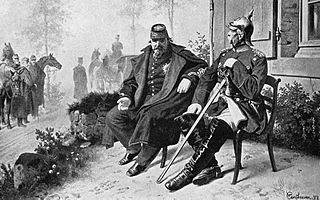Forgotten Weapons
Published on 21 Jun 2019My first book is available for pre-order; check it out!
https://www.headstamppublishing.com/f…http://www.patreon.com/ForgottenWeapons
Cool Forgotten Weapons merch! http://shop.bbtv.com/collections/forg…
When the Israeli Defense Forces tested the FN Minimi, they found it to be lacking in a few areas, and decided that they could develop a better SAW domestically. Developed in the 1980s, the result was the Negev. Like the Minimi, the Negev is a 5.56mm light machine gun that can feed from either belts or box magazines (Galil mags or AR mags with an adapter), has quick-change barrels, and fires from an open bolt. The Negev has several features the Minimi does not, though, including a semiauto fire control position, optics mounting on the receiver (instead of the top cover), a standard folding stock, and some mechanical improvements internally.
So, let’s dig into this Negev and see how it ticks!
Many thanks to Movie Armaments Group in Toronto for the opportunity to showcase their Negev for you! Check them out on Instagram to see many of the guns in their extensive collection:
https://instagram.com/moviearmamentsg…
Contact:
Forgotten Weapons
PO Box 87647
Tucson, AZ 85754
June 22, 2019
Negev LMG: The Israeli Take on the SAW
Gyrojet Rocket Pistol
Forgotten Weapons
Published on 8 Sep 2014http://www.forgottenweapons.com
The Gyrojet was the closest thing to a commercially successful rocket pistol, although not many were sold before the company went out of business. This is the 13mm pistol version (the most common type of Gyrojet), and fires a 180 grain rocket projectile. It was for sale – with 15 rounds of live ammunition – at the Rock Island Premier Auction in September. Hammer price on it was $5500.
Theme music by Dylan Benson – http://dbproductioncompany.webs.com
QotD: Militant Islam and the arts
What I’ve learned since 9/11 is that the small pleasures — music, theatre, film — have to be earned. In the Muslim world, there is no music. In Libya they destroyed all the musical instruments — music was considered an abomination. When the demography changes, there will be no concert halls. Artists who take a multicultural view should be aware of this. Count the number of covered women in London’s West End. In Birmingham, where I went to high school, you have a provincial symphony orchestra in a Muslim city — I’m not sure it will survive. All art, all popular culture, is endangered by Islam, because there’s no room for it. It’s considered libertinism. And I’m not even talking about Miley Cyrus twerking at the music awards. What turned Sayyid Qutb against the morality of the West is that he attended a church dance in Greeley, Colorado, which was a dry town in 1948, and he heard the song “Baby, It’s Cold Outside”. He thought it was evil. And now things are getting a lot worse. Ugly things are happening.
Mark Steyn, interviewed by John Bloom, “Mark Steyn, Cole Porter and Free Speech”, Quadrant, 2017-05-11.
June 21, 2019
“Rise of Evil” – Adolf Hitler and the Nazi Party – Sabaton History 020 [Official]
Sabaton History
Published on 20 Jun 2019After the Great War, many different movements and parties tried to replace the by many despised Weimar Republic. One of them was the NSDAP, the National Socialist German Workers Party. Headed by Adolf Hitler, the NSDAP transformed Germany into a country that would once again bring war and destruction to Europe. The Sabaton Song “Rise of Evil” (on the Attero Dominatus album) is about Hitlers rise to power, and in this video we dive into the historical context behind the song.
Support Sabaton History on Patreon: https://www.patreon.com/sabatonhistory
Check out the trailer for Sabaton’s new album The Great War right here: https://www.youtube.com/watch?v=HCZP1…
Watch more videos on the Sabaton YouTube channel: https://www.youtube.com/user/Sabaton?…
Listen to Sabaton on Spotify: http://smarturl.it/SabatonSpotify
Official Sabaton Merchandise Shop: http://bit.ly/SabatonOfficialShopHosted by: Indy Neidell
Written by: Markus Linke and Indy Neidell
Directed by: Astrid Deinhard and Wieke Kapteijns
Produced by: Pär Sundström, Astrid Deinhard and Spartacus Olsson
Creative Producer: Joram Appel
Executive Producers: Pär Sundström, Joakim Broden, Tomas Sunmo, Indy Neidell, Astrid Deinhard, and Spartacus Olsson
Maps by: Eastory
Edited by: Iryna Dulka
Sound Editing by: Marek KaminskiEastory YouTube Channel: https://www.youtube.com/channel/UCEly…
Archive by: Reuters/Screenocean https://www.screenocean.com
Music by Sabaton.Sources:
– Graphic: Liambaker98
– Jüdisches Museum Berlin
– United States Holocaust Memorial Museum
– Colorization of Goebbels: Marina AmaralAn OnLion Entertainment GmbH and Raging Beaver Publishing AB co-Production.
© Raging Beaver Publishing AB, 2019 – all rights reserved.
From the comments:
Sabaton History
1 day ago (edited)
In hindsight, we can clearly see the path to power and war that Germany and many of its people chose to walk in the 1930s. In practice, history is never as deterministic as it later seems. Nothing what happened was “meant” to happen. With that in mind, let us walk you through the process of the Nazi rise to power. From a revolutionary movement in the ’20s to a political party in a democratic system.We encourage debate and discussion about this in the comment section. However, we don’t allow for any extreme, racist, anti-semitic, revisionist or apologist theories down here. These comments will be moderated by historians and, while keeping your freedom of speech in mind, we will enforce our rules with a ban if necessary. Please keep it civil.
Thats it for today!
Cheers!
The PPC’s 2019 election platform on freedom of expression
Maxime Bernier’s People’s Party of Canada is posting the individual issues from their 2019 election platform online, and today’s addition was their position on freedom of expression:
The rights of Canadians to freely hold and express beliefs are being eroded at an alarming speed under the Trudeau government. Some of its recent decisions even require that Canadians renounce their most deeply held moral convictions and express opinions they disagree with.
[…]
Our Plan
What some people find politically incorrect, offensive or even hateful cannot serve as the legal basis for discrimination and censorship. Canadians should be able to enjoy maximum freedom of conscience and expression as guaranteed in Section 2 of the Charter.
A People’s Party Government will:
- Restrict the definition of hate speech in the Criminal Code to expression which explicitly advocates the use of force against identifiable groups or persons based on protected criteria such as religion, race, ethnicity, sex, or sexual orientation.
- Repeal any existing legislation or regulation curtailing free speech on the internet and prevent the reinstatement of section 13 of the Canadian Human Rights Act.
- Repeal C-16 and M-103.
- Ensure that Canadians can exercise their freedom of conscience to its fullest extent as it is intended under the Charter and are not discriminated against because of their moral convictions.
- Withhold federal funding from any post-secondary institution shown to be violating the freedom of expression of its students or faculty.
You can read the full policy statement here, or the whole platform here.
Making America Great Again | Between 2 Wars | 1927 Part 1 of 2
TimeGhost History
Published on 20 Jun 2019In 1927 the US is finally back to its pre-WWI economic greatness, at least measured by the stock market. But all is not well with the finances in the land of the free and home of the brave.
Join us on Patreon: https://www.patreon.com/TimeGhostHistory
Hosted by: Indy Neidell
Written by: Francis van Berkel and Spartacus Olsson
Research by: Francis van Berkel
Directed and Produced by: Spartacus Olsson and Astrid Deinhard
Executive Producers: Bodo Rittenauer, Astrid Deinhard, Indy Neidell, Spartacus Olsson
Creative Producer: Joram Appel
Post Production Director: Wieke Kapteijns
Edited by: Wieke KapteijnsArchive by Reuters/Screenocean http://www.screenocean.com
A TimeGhost chronological documentary produced by OnLion Entertainment GmbH
From the comments:
TimeGhost History
1 day ago (edited)
So… before you all go and get your panties in a bunch about the title. 1. This video is literally abut the effort to make America great again in the 1920s. 2. Although Donald Trump appropriated that expression in 2016, it has been used by two Presidents before him; Ronald Reagan and Bill Clinton. 3. It has even been used in other political contexts both liberal and conservative as early as in the 1940s. So, as a historical reference to US history, not a political value comment, it is highly relevant to this episode. On that note, our heartfelt thanks to our TimeGhost Army that keeps the wheels attached to the TimeGhost vehicle and keeps us rolling forward into the past. If you’re not already a member, you can join here: https://www.patreon.com/TimeGhostHistory or here: https://timeghost.tv
Lies, damned lies, and hate crime statistics
Fraser Myers explains why the much-remarked-upon British crime statistics showing huge increases in hate crimes are much more a statistical artifact than a true reflection of the state of British society:
Allegedly, England and Wales are in the grip of a “surge” in homophobic and transphobic hate crime. “The rate of LGBT hate crime per capita rose by 144 per cent between 2013-14 and 2017-18”, it reports. Hate-crime hotspots like South Yorkshire and Hampshire experienced even larger surges, it claims, with police-recorded crimes rising by 376 per cent and 189 per cent in the same period, respectively.
To make matters worse, according to LBGT campaigners, this rise in hate crime doesn’t even capture the true extent of the hatred out there. Taz Edwards-White, alliance manager at equalities and diversity organisation Metro, told the Guardian that the hate-crime figures were likely to be “the tip of the iceberg”. She and other campaigners say this rise could be down to the rise of right-wing populism.
The truth is rather different. Every year for the past five years, the release of police-recorded data on hate crime has been accompanied by panicked media reports of a hate-crime surge. But as last year’s Home Office report made abundantly clear, large increases “are due to the improvements made by the police in their identification and recording of hate-crime offences and more people coming forward to report these crimes rather than a genuine increase” (emphasis mine).
What’s more, there is a good reason why the “surge” identified by the Guardian takes off in 2013-2014. 2014 was the year the College of Policing released its Hate Crime Operational Guidance [PDF], which is still used to this day. This guidance actually demands that the numbers increase. “Targets that see success as reducing hate crime are not appropriate”, it says. As part of the drive to record more crime, there has been a slew of public-information campaigns and regular exhortations from police for the public to report hateful incidents, particularly in the wake of major political events like the EU referendum and the 2017 terror attacks.
Police-recorded data has other problems, too. Police are obliged to record not only criminal actions but also all non-crime hate incidents. A non-crime hate incident is literally any event that is perceived by the victim or any other person to be motivated by hostility towards a so-called protected characteristic. The key word here is perceived. As the Operational Guidance makes clear: “The victim does not have to justify or provide evidence of their belief, and police officers or staff should not directly challenge this perception. Evidence of the hostility is not required for an incident or crime to be recorded as a hate crime or hate incidents.”
Jeremy Clarkson’s Motorworld UK Special
Matthew Lowry
Published on 19 Nov 2016This is the last episode of Motorworld (BBC WORLDWIDE), the extremely rare UK Special. All copyrights go to their respective owners.
QotD: Caloric intake and weight gain
The average person needs about 800,000 calories per year. And it takes about 3,500 extra calories to gain a pound of weight. So if somebody stays about the same weight for a year, it means they fulfilled their 800,000 calorie requirement to within a tolerance of 3,500 calories, ie they were able to match their food intake to their caloric needs with 99.5% accuracy.
By this measure, even people who gain five or ten pounds a year are doing remarkably well, falling short of perfection by only a few percent. It’s not quite true that someone who gains five pounds is ((5*3,500)/800,000) = 98% accurate, because each pound you gain increases caloric requirements in a negative feedback loop, but it’s somewhere along those lines.
Take a second to think about that. Can you, armed with your FitBit and nutritional labeling information, accurately calculate how many calories you burn in a given day, and decide what amount of food you need to eat to compensate for it, within 10%? I think even the most obsessive personal trainer would consider that a tall order. But even the worst overeaters are subconsciously managing that all the time. However many double bacon cheeseburgers they appear to be eating in a single sitting, over the long term their body is going to do some kind of magic to get them to within a few percent of the calorie intake they need.
It’s not surprising that people overeat, it’s surprising that people don’t overeat much more. Consider someone who just has bad impulse control and so eats whatever they see – wouldn’t we expect them to deviate from ideal calorie input by more than a few percent, given that this person probably has no idea what their ideal input even is and maybe has never heard of calories?
Scott Alexander, “Book Review: The Hungry Brain”, Slate Star Codex, 2017-04-27.
June 20, 2019
Making a Viking Shield
Rex Krueger
Premiered 4 hours agoMore Video and Exclusive Content: http://www.patreon.com/rexkrueger
Get my wood turning book: http://www.rexkrueger.com/book
Tools used in this project (affiliate) || Bowl Gouge: https://amzn.to/2KUS7uZ
Skew Chisel: https://amzn.to/2Zt1WUQ
Finishing Epoxy: https://amzn.to/2WNYUJh
Face Shield: https://amzn.to/31ELxhTAlex Larson on SoundCloud: https://soundcloud.com/alex-larson-34…
Woodturning a Spiked Mace: https://www.youtube.com/watch?v=Ig4H-…
A Clockwork Orange – Dystopias and Apocalypses – Extra Sci Fi
Extra Credits
Published on 18 Jun 2019Go to https://NordVPN.com/ExtraCredits to get 75% off a 3 year plan and use code
ExtraCreditsto get an extra month free. Protect yourself online today!A Clockwork Orange reflects a cultural fear of society’s moral decay in the 1960s. Its usage of a mashup slang language known as “nadsat” illustrates the complexities of rebellious youth culture. Ultimately, Anthony Burgess’s work asks us to think about if or when free will should ever be suppressed, but the major differences between the book and the film version of this story present contrasting takeaways.
Where the dystopias of Brave New World and 1984 warned against the easy slide into totalitarianism, and painted for us worlds in which freedom is nearly a forgotten thing… A Clockwork Orange presents us with a protagonist who has almost an excess of freedom, and in doing so it shows us the shift in societal fears.
James Holland on the operational side of World War 2
I saved this link at the time, then life intervened and I only just re-found it now … but it’s not a time-sensitive article and the arguments he makes are still worth considering:
Studying such things in detail meant I was now looking at the operational level of war. Any conflict — or business for that matter — is understood to be conducted on three levels. The first is the strategic — that is, the overall aims and ambitions. The second is the tactical: the coal face, the actual fighting, the pilot in his Spitfire or man in his tank. And the third is the operational — the nuts and bolts, the logistics, economics and the supply of war.
Almost every narrative history of the war ever published almost entirely concentrates on the strategic and tactical levels, but gives scant regard to the operational, and the result is a skewed version of events, in which German machine guns reign supreme and Tiger tanks always come out on top.
Studying the operational level as well, however, provides a revelatory perspective. Suddenly it’s not just about tactical flair, but about so much more. Britain, for example, decided to fight a highly mechanical and technological war. “Steel not flesh” was the mantra and that’s why the British had a small army, yet still ensured it was 100-percent mechanized. They also developed a vast air force and built a staggering 132,500 aircraft during the war — and that’s 50,000 more than the Germans. Until the start of 1944, the priority for manpower in Britain was not the army or navy or even air force, but the Ministry of Aircraft Production. Well-fed men and women were kept in the factories.
Germany, on the other hand, was very under-mechanized but had a vast army, which meant it was dependent on horse-power and foot-slogging infantrymen. As a result of so many German men at the front, their factories were manned by slaves and POWs, who were underfed and treated abominably, and whose production capacity was affected as a result.
And if the ability to supply war was key, then in the war in the West, it was the Battle of the Atlantic that was the decisive theater. Yet Germany built a surface fleet before the war, which could never hope to rival Britain or France and in doing so neglected the U-boat arm. Despite sinking substantial amounts of British supplies in 1940, it was still nothing like enough to even remotely force Britain to her knees. In truth, there were never enough U-boats to more than dent the flow of shipping to Britain. In fact, out of 18,772 sailings in 1940, they sank just 127 ships, that is, 0.7 percent, and 1.4 percent in the entire war.
Tank Chats #49 A7V | The Tank Museum
The Tank Museum
Published on 20 Mar 201821 March 1918, was the action debut of the German A7V tank during the First World War.
One hundred years later, historian David Fletcher talks through the vehicle and its history. The Tank Museum’s A7V is a replica, which can be seen running at Museum events, like TANKFEST.
Support the work of The Tank Museum on Patreon: ► https://www.patreon.com/tankmuseum
Or donate http://tankmuseum.org/support-us/donateVisit The Tank Museum SHOP: ►https://tankmuseumshop.org/
Twitter: ► https://twitter.com/TankMuseum
Tiger Tank Blog: ► http://blog.tiger-tank.com/
Tank 100 First World War Centenary Blog: ► http://tank100.com/ #tankmuseum #tanks
















